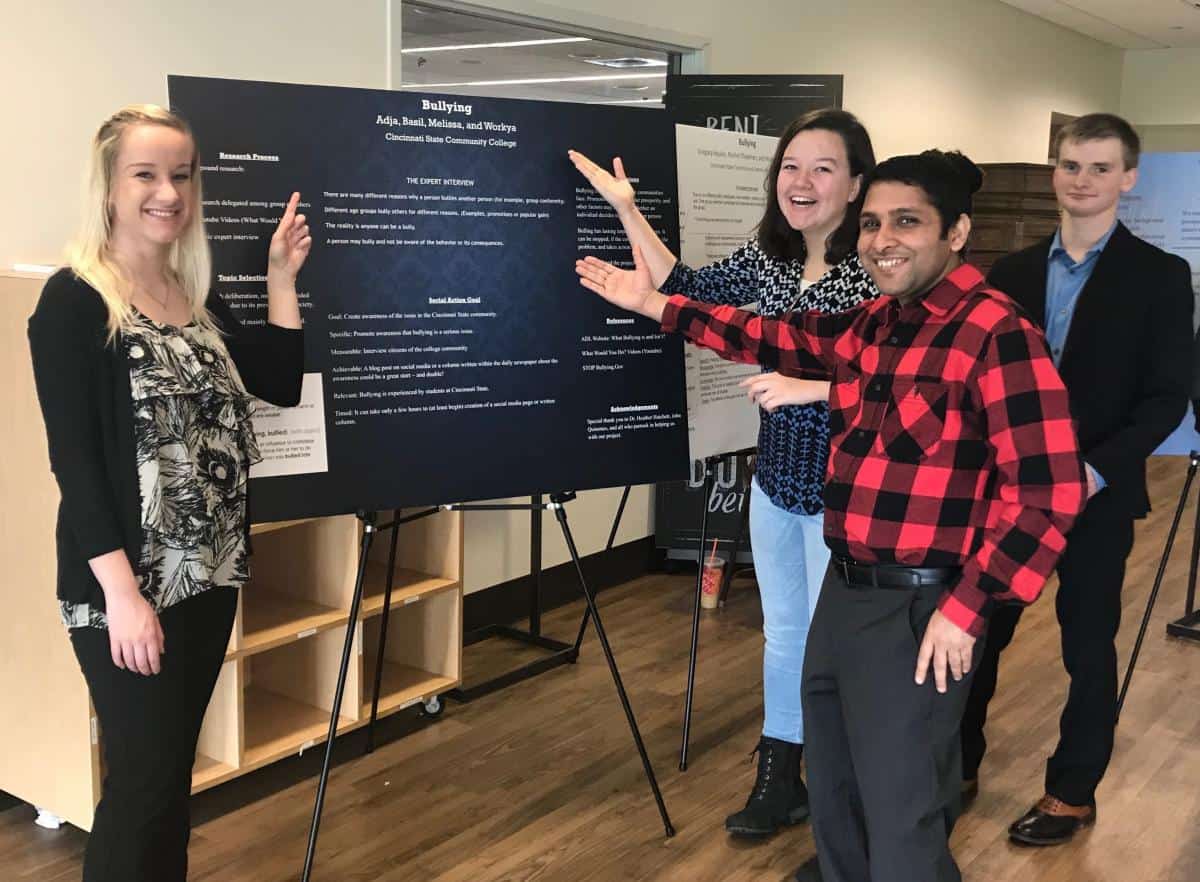Students collaborated to achieve blended course goals

On April 17 and 18, 2019, students from Introduction to Psychology (PSY 110), together with students from English as a Second Language courses (ESL 052), presented posters that summarized the findings of their semester-long collaborative research projects.
Students and employees visited the poster display to hear student presentations about their research.
To carry out the collaborative project, named “We Are Cincinnati State,” students formed research teams that included members from both courses.
Each team chose a social justice topic to investigate and then completed an interview with a subject-matter expert.
Supporting assignments were tailored to the specific learning outcomes of each course. Examples included:
- PSY 110 – Student interviews with experts were an example of a professional consultation. Students wrote a reflection paper to relate the newly-acquired information to at least four concepts from introductory psychology such as conformity, observational learning, confirmation bias, and cognitive dissonance.
- PSY 110 – A course learning outcome is to experience diversity as expressed through individual differences and similarities. Throughout the project, class discussions centered on differences in culturally-shaped communication styles and preferences experienced by project partners.
- PSY 110 – For the final presentation posters, psychology students analyzed how group processes, including communication dynamics, affected project success. The students also were asked to offer ideas on how to overcome communication problems in future projects.
- ESL 052 – Students who were studying how to use correct punctuation for direct quotations transcribed three specific responses from the expert interview, meeting a department learning outcome for documenting key details of a discussion in English and using appropriate academic conventions in writing.
- ESL 052 – In class, students had to use paraphrasing techniques to explain in their own words what the expert had said while still giving the expert credit. This was part of a larger discussion of plagiarism, intellectual property, and attribution.
- ESL 052 – For the students’ problem-solution essay, most wrote about a topic related to their research presentation, and developed a more nuanced account of the issues to support an argument (a department learning outcome). They integrated coordinating conjunctions and adverb clauses into their essays to create compound and complex sentences that explained the challenges of their topic and proposed relevant strategies for addressing problems.
ESL instructor Maggie Oliveira said throughout the semester, students in both courses developed awareness of a pressing social issue, applied concepts from their studies to improve the quality of their research, built relationships with students from another course, and gained experience completing asynchronous group work.
Psychology professor Heather Hatchett said the idea for the collaborative approach to the courses emerged from academic self-study reports prepared by the ESL department and the Social and Behavioral Sciences department.
